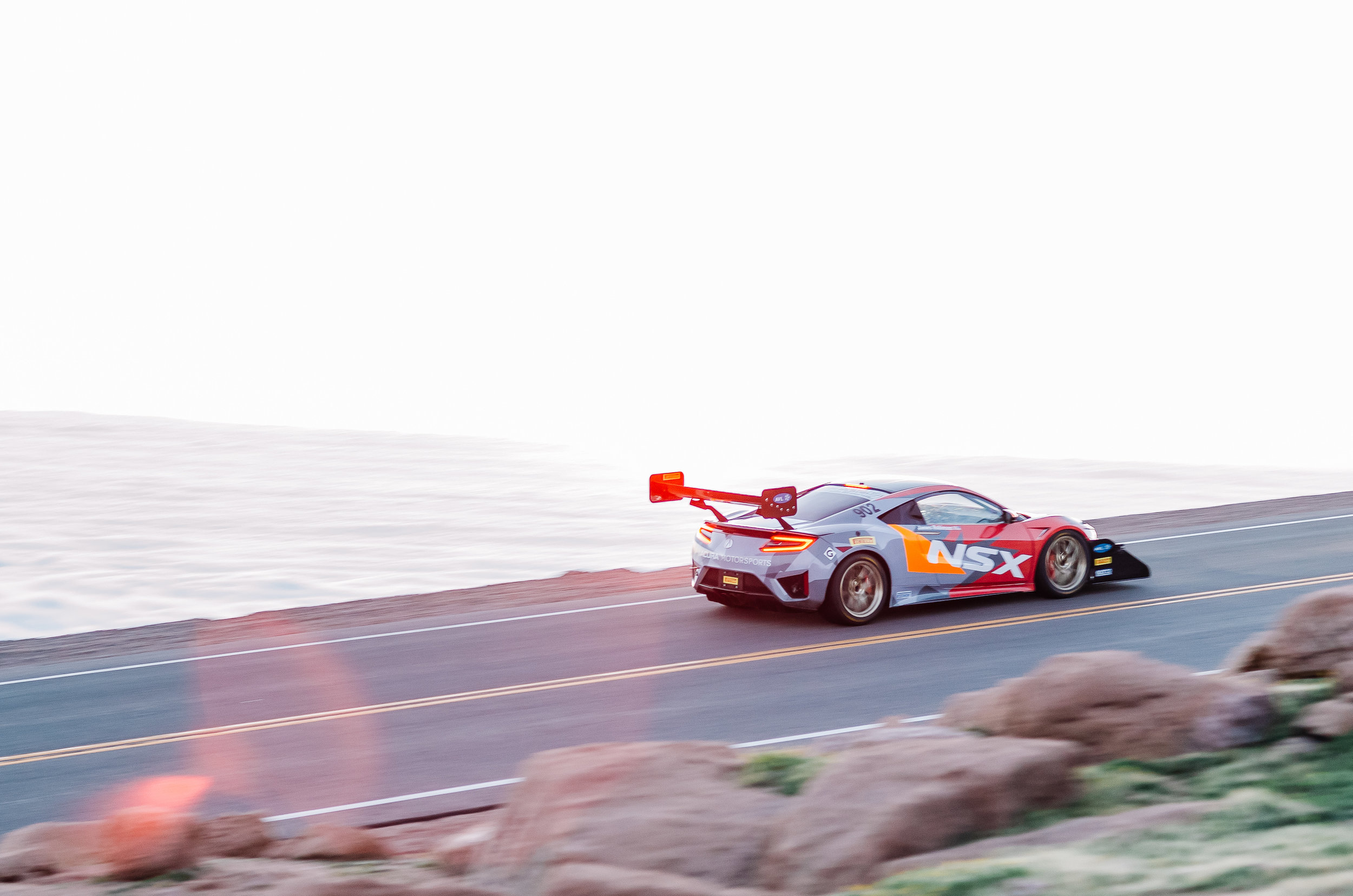2018 Pikes Peak Hillclimb
Photos and words by Willy Weston.
Automotive enthusiasts from around the world are familiar with the United States' second oldest motorsport event to the Indianapolis 500, the Pikes Peak International Hill Climb. This race to the clouds has championed the bravest drivers and quickest land vehicles since 1916, and this year, the 96th annual hill climb welcomed a new king of the hill, Romain Dumas. Dumas shattered the previous hill record by 12 seconds in Volkswagen's purpose-built IPDR hill climber only a week after participating in the 24 Heures Du Mans. What made this year extra special was how VW showed the world a glimpse of the future of automotive transportation and performance by discarding the notion of a combustion-powered car ever regaining the coveted lead time again.
This was my first experience at the hill climb, both as a spectator and media, and will hardly be the last, as I plan to regularly involve Pikes Peak into my rotation of annual automotive events. This hill climb, over many others, challenges the top drivers and vehicles with it’s 156 turns in 12.42 miles and 4,725 feet change in elevation to the summit. The chance to indulge myself in experiencing and documenting this event with my ever-developing photography equipment and skills was a career and life milestone.
I think a question a lot of automotive enthusiasts ask is what makes Pikes Peak so special, and why should one experience it? Most people, especially in the United States, have heard of the Pikes Peak Hill Climb at some point, but most don't know more than it showcases fast cars with fast drivers up a formidable mountain through a picturesque environment. Although those facts end up being the highlight of the event, what makes the hill climb worth experiencing for yourself is witnessing the variety of competitors and vehicles that usually don’t make headlines.
Considering the hill climb's prestige among drivers, holding a record in a specific class is one of the best ways of showing off engineering and driving talent. However, among the multi-thousand dollar operations funded by manufacturers and sponsors, there are amateur locals that bring out their decades-old cars and motorcycles to best their old times from years prior. This is the event to see cars built in a garage over a couple years with some friends compete against cars built on CAD programs by professional teams in only a few months.
Despite the disparities of participants, their times up the hill were very competitive. One of the best examples of this was the Acura factory sponsored NSX and a homebuilt 1988 BMW E30. Both clad in carbon fiber and six cylinder turbocharged engines, it was the NSX that had to keep up with the thirty year old BMW, trailing the heavily modified German shoebox by about a second.
Regardless of the record times the cars and drivers made it to the summit, the exciting bit for a spectator to see is these vehicles go all out up the mountain. What really made the experience satisfying was seeing these legends in their playground. Whether it was the new VW electric car zip from the start of a straight to the end so fast I had trouble keeping up with it on my camera’s viewfinder, or seeing a mid 80s Audi Quattro S1 rip around a one of the many hairpins at 12,000 feet in elevation, I was elated for every second. It was encountering the VW that made me realize we’re now at a time where electric sports cars can be just as exciting as their combustion-powered counterparts.
Most automotive enthusiasts, especially those that covet vintage vehicles, will typically despise or disregard electric-powered vehicles. They’ll explain how the whirring electric motors will never satisfy the experience an antiquated roaring V8 provides to a true enthusiast. However, as that train of thought has lessened with more exposure to electric cars, many still hold that belief close to their chest. They believe electric cars will never truthfully be able to replicate the enthralling feeling of shifting gears while accelerating an engine to its redline rpm. The smell of unburnt fuel from a heavily rich mixture and hot oil from a leaky valve cover gasket could never be associated with a a curvy road session just few miles out of town, if driven in an electric car.
As more enthusiasts experience performance electric vehicles, everything about leaky, loud, and maintenance-heavy combustion engines will be forgotten because they're too busy trying to keep the car on the road and the smile from splitting their face in two. The superior amount of torque and ability to keep the weight of the drivetrain so much lower on an electric car will open the eyes of many enthusiasts to the enjoyment of driving and owning an electric sports car or bike. The VW at Pikes Peak was a sneak peek of the electric sports car us enthusiasts are looking forward to. Despite this revelation in future motorsport and sports cars, I'll be hanging on to as many vintage combustion cars as I can enjoy, but that's for another discussion.

